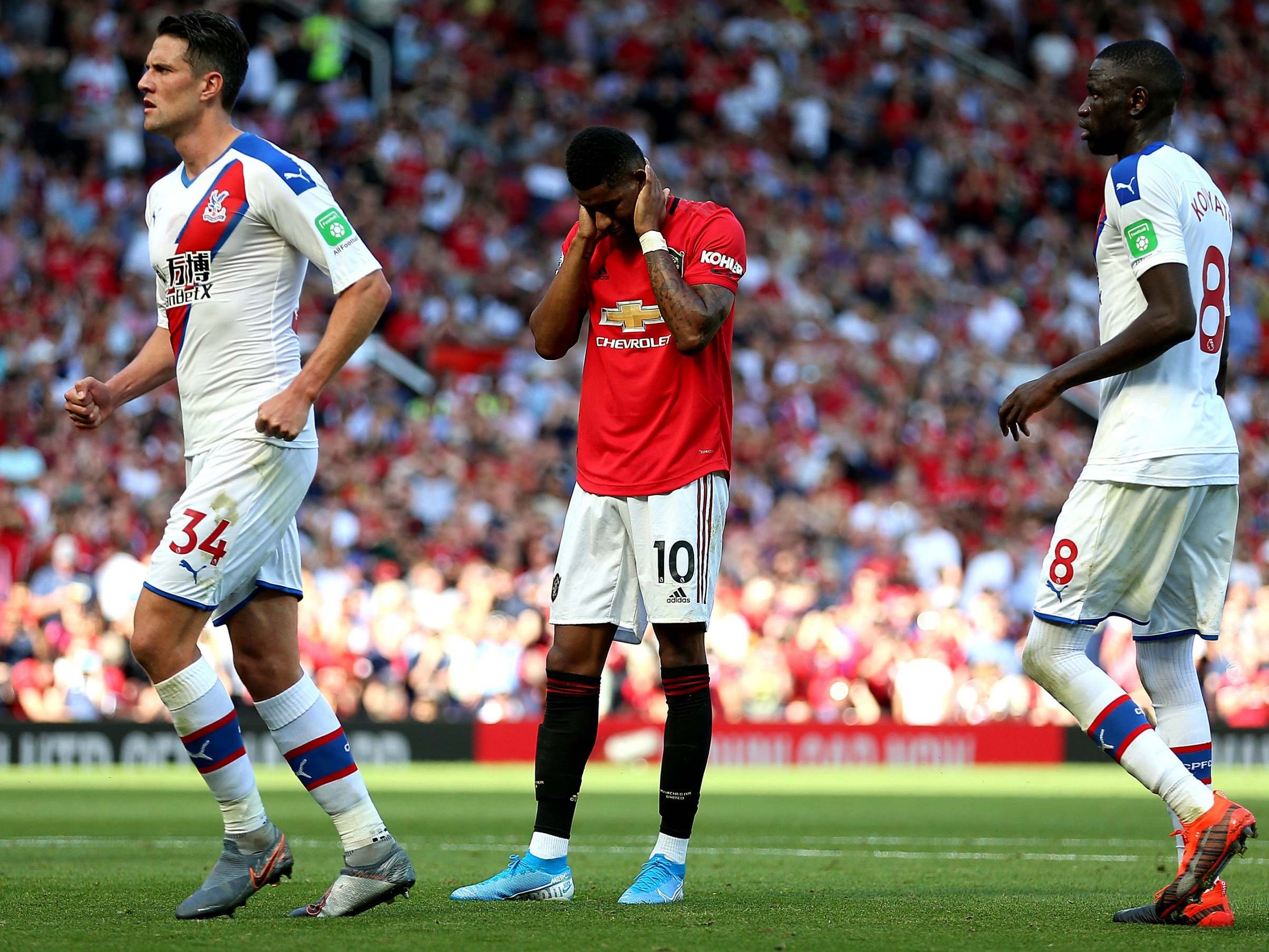Manchester United defeat to Crystal Palace was example of worrying Ole Gunnar Solskjaer trend
United often struggle when they dominate possession under Solskjaer

Your support helps us to tell the story
From reproductive rights to climate change to Big Tech, The Independent is on the ground when the story is developing. Whether it's investigating the financials of Elon Musk's pro-Trump PAC or producing our latest documentary, 'The A Word', which shines a light on the American women fighting for reproductive rights, we know how important it is to parse out the facts from the messaging.
At such a critical moment in US history, we need reporters on the ground. Your donation allows us to keep sending journalists to speak to both sides of the story.
The Independent is trusted by Americans across the entire political spectrum. And unlike many other quality news outlets, we choose not to lock Americans out of our reporting and analysis with paywalls. We believe quality journalism should be available to everyone, paid for by those who can afford it.
Your support makes all the difference.These days, more and more Premier League matches are essentially attack against defence. While one team will dominate the ball, circulating possession until an opening appears, the other will sit deep, restrict space and seek to break at speed when possible.
So, on which side of that divide are Manchester United? This weekend, it was most certainly the former. Ole Gunnar Solskjaer’s side enjoyed 71 per cent of the ball against Crystal Palace, with 22 attempts on goal compared to five, and yet they lost 2-1.
It all could have gone very differently. United were essentially beaten by two preventable errors: Victor Lindelof losing a header to Jeffrey Schlupp for the first goal and David de Gea’s stoppage-time, near-post fumble for the second.
It was a poor defeat but one that Solskjaer could – and did – put down to bad luck, but it also corresponded to a concerning trend that he should not blithely ignore.
United have had more than 60 per cent of the ball in 11 of Solskjaer’s 32 games in charge. Of those 11, they have won five, drawn three and lost three. So far, so unremarkable. But add a little context and you realise that four of those five wins were Solskjaer’s first four games as caretaker over the Christmas period, before January’s Dubai training camp.
Since then, United have rarely dominated possession in a game and won it. If anything, the opposite is true. Burnley, Wolverhampton Wanderers, Huddersfield Town, Cardiff City and now Palace have all been decidedly second-best against Solskjaer’s side and yet have still taken a point or three.
The lesson for ‘lesser’ opposition is clear: let United have the ball and they will probably not beat you.
In fairness, dominate possession against Solskjaer’s United and they may still hurt you. Chelsea, West Ham and even second-tier Reading have come to Old Trafford since the turn of the year and seen more of the ball than their hosts, yet all three returned south defeated.
United have had less than 40 per cent possession in eight games under Solskjaer, winning four and drawing once. The wins – away at Tottenham, in the FA Cup at Arsenal and Chelsea and that remarkable night in Paris – are the best nights of his spell to date. The 3-1 victory over Paris Saint-Germain was achieved with less than a third of the ball.
In fact, put those first four dominant wins in charge to one side and Solskjaer’s previous 28 games now split evenly into two camps: 14 where United had more possession than their opponents, 14 where they did not. United won only four of the 14 games in which they saw more of the ball, but won nine of 14 in which they saw less.

All of which raises the question: what exactly is Ole Gunnar Solskjaer’s Manchester United? It appears to be a team which is happy to surrender the battle for possession in favour of focusing on a fast, direct, counter-attacking approach. That would certainly chime with how Solskjaer says he wants his side to play.
But while that approach may be very well in the Parc des Princes or produce a few useful results against fellow members of the top six, the vast majority of United’s league games this season will not be against elite opponents. They will largely follow the same pattern as Saturday, with Solskjaer’s side expected to be the aggressors.
The Premier League’s very best accept this when they face the so-called ‘bottom 14’, and do so without sacrificing their dominance of the ball. Manchester City are the most possession-orientated side in English football’s history, though no less successful for it. Their variation and intricacy in their final-third play means they can bypass any deep-set defence.
There have been fleeting examples of United doing the same. The build-up to Anthony Martial’s goal in Solskjaer’s first game against Cardiff springs to mind, while the breakthrough at Molineux last Monday is a much more recent example. But more often than not, United’s attack flounders when up against an organised backline.
So it was on Saturday, when only two of those 22 attempts could be described as chances. Both were half-chances, at that. United otherwise looked like a team who have become so accustomed to breaking into space on the counter-attack, they have forgotten how to penetrate opponents who are happy to sit back.
The Premier League is becoming increasingly split into two camps – the top six possess, the rest ‘play the lottery’ - but United would appear to straddle both camps: on the one hand, enjoying the dominance of the ball that comes with being a big club, while at the same time being unsure of how to use it.
Join our commenting forum
Join thought-provoking conversations, follow other Independent readers and see their replies
Comments